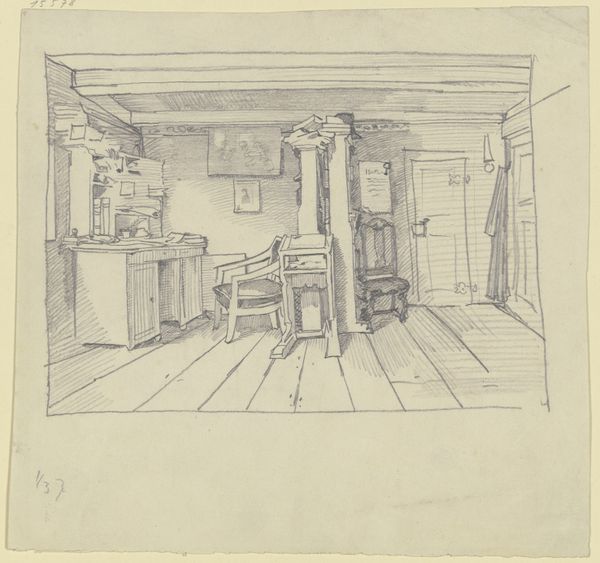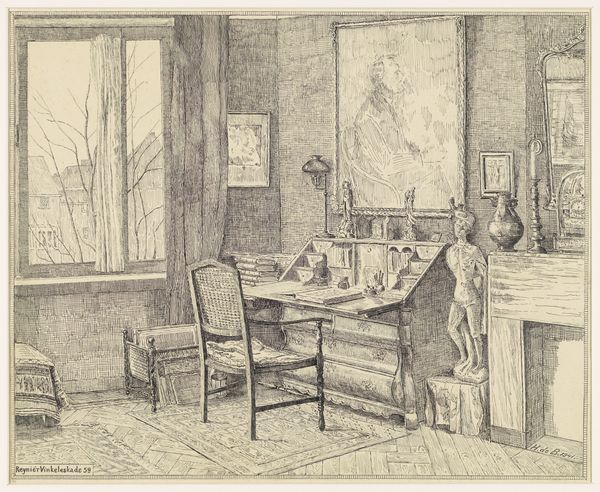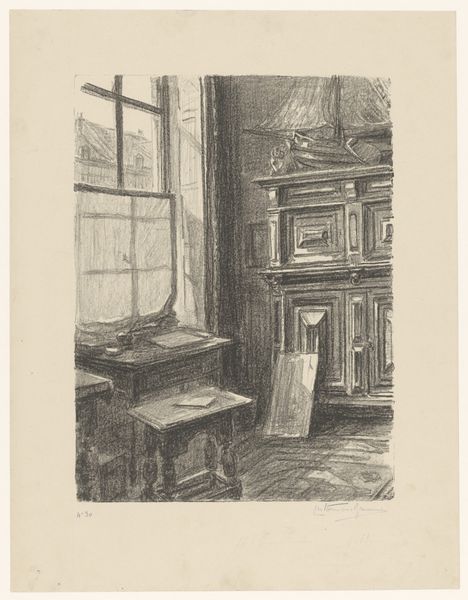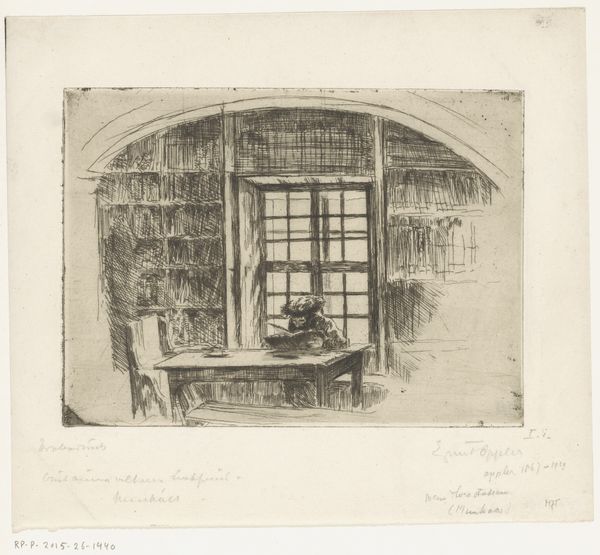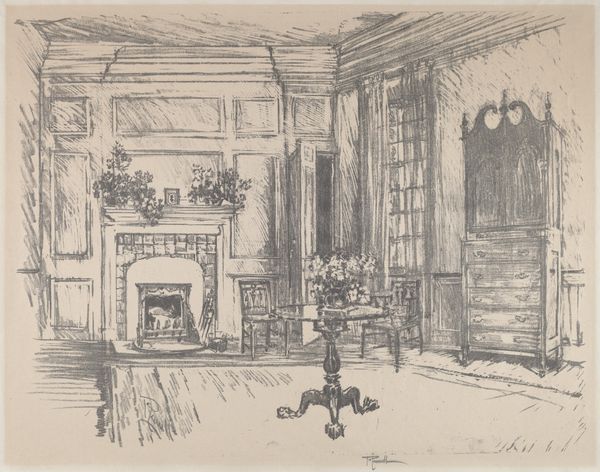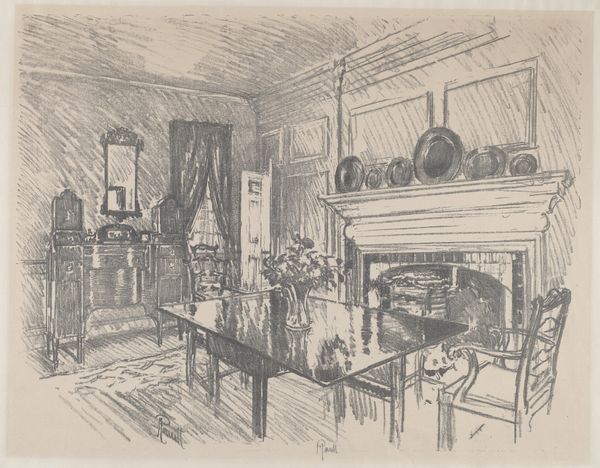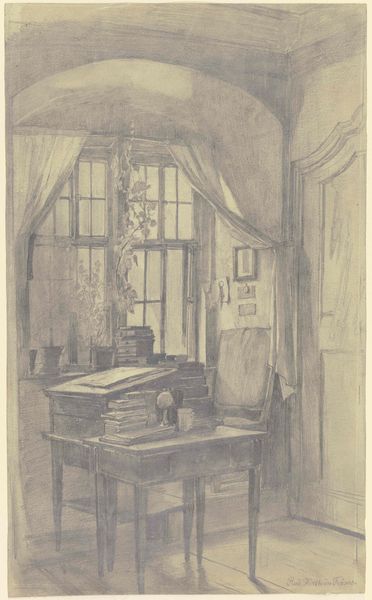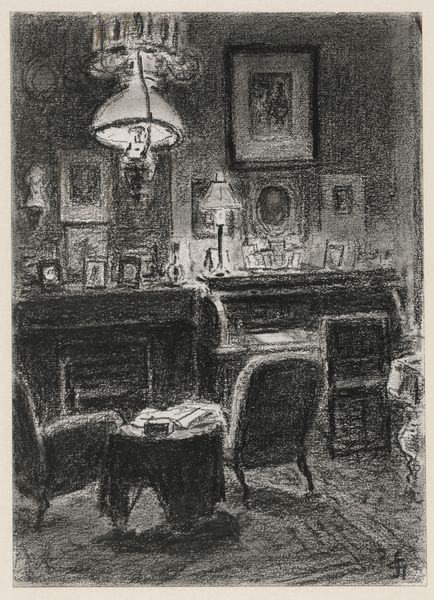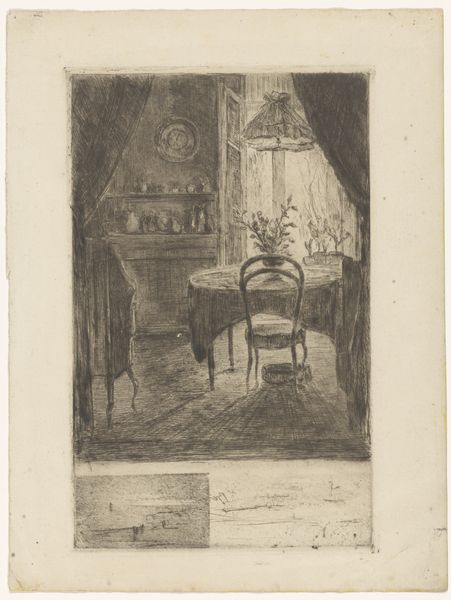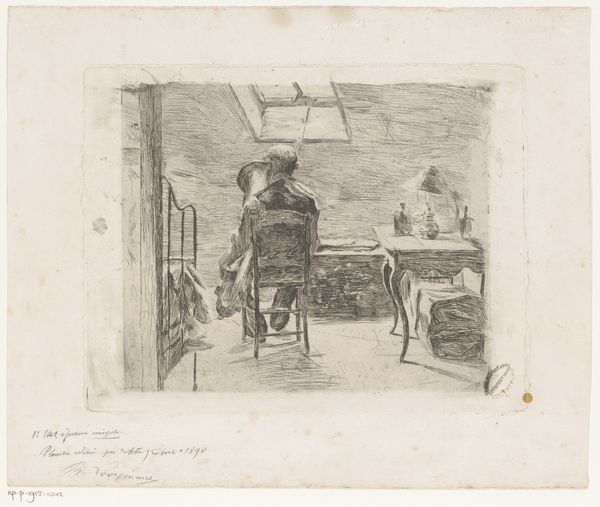
Studeerkamer van Carel Vosmaer aan de Ruiterstraat te Den Haag Possibly 1888
0:00
0:00
drawing, paper, watercolor, ink, pencil
#
portrait
#
drawing
#
toned paper
#
impressionism
#
etching
#
perspective
#
paper
#
watercolor
#
ink
#
intimism
#
pencil
#
architectural drawing
#
cityscape
Dimensions: height 195 mm, width 280 mm
Copyright: Rijks Museum: Open Domain
Editor: This watercolour and ink drawing, believed to be from 1888, is titled "Studeerkamer van Carel Vosmaer aan de Ruiterstraat te Den Haag" by Salomon van Witsen. It depicts an interior space, probably a study, and I'm struck by how the artist captures the light filtering through the windows. What jumps out at you when you see this piece? Curator: For me, this image provides a glimpse into the cultural and intellectual life of the late 19th century. Consider the setting: a study filled with books, hinting at the importance of knowledge and scholarship in that period. What do we know about Carel Vosmaer himself? Was he a prominent figure? His profession and the subjects he focused on would illuminate why Witsen chose to depict his personal workspace. Editor: The description states the subject worked as a poet and a writer... someone with an impressive bibliography, and some talent, it would seem. Curator: Indeed, this tells us a lot. Think about the rise of the middle class and their increasing access to education and cultural capital during this era. This drawing captures that milieu. The presence of books isn't merely decorative; it signifies aspiration and the pursuit of intellectual refinement within a specific social strata. What about the art that appears hung up in the room; what can we gather from this? Editor: They seem like they're portrait works of the man himself and, if the date on this image is to be believed, it might actually have been composed in situ! Curator: Absolutely. It brings the artist's interpretation even closer. A question that emerges, then, is to examine the relationship of the men involved - did the patron play a role in image distribution? These considerations shape our understanding of the artwork’s purpose and impact on society and subsequent cultural trends. Editor: I hadn't considered the impact such a personal portrait would have at the time... It almost feels like a public endorsement now that I'm thinking about it. It’s fascinating to consider the work not just as a beautiful depiction, but as a historical and social artifact. Curator: Precisely! Art is never created in a vacuum.
Comments
No comments
Be the first to comment and join the conversation on the ultimate creative platform.

